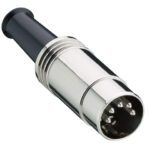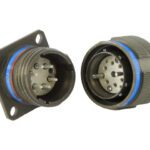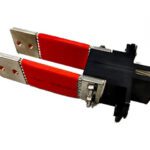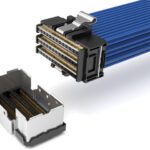What are Active Optical Cable Assemblies?
Meet the Connector: AOC assemblies
Active optical cable (AOC) assemblies were developed to combine the benefits of copper and fiber optic cable assemblies. Copper cable assemblies are known for their ruggedness and reliability, particularly at the connector interface. Copper connectors have multiple points of contact which helps them withstand shock and vibration, and resist damage when unmated. However, they are not suited for all applications because they are bulky and heavy, and they are limited to three- or four-meter distances for higher data rates. They also require shielding to maintain signal integrity in high electromagnetic interference (EMI) environments.
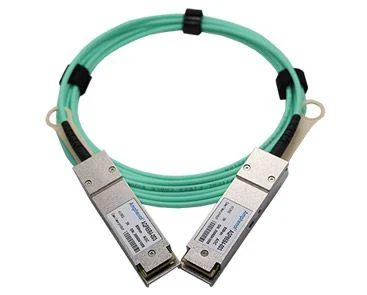
Amphenol’s AOC series is characterized by low power consumption, small size, and high reliability, which can increase capacity of data centers, improve port density, and reduce power consumption.
Fiber optic cable assemblies overcome the size, weight, and distance challenges of copper, but their glass fiber terminations make them vulnerable when unmated, and highly susceptible to contaminants such as dust, dirt, oil, and water.
The fiber optic cables in AOC assemblies are terminated with traditional copper connectors that have optical transceiver circuits to convert the electrical signals to optical signals. The signals are routed over standard fiber multimode fiber up to 100 m, and then converted back into electrical signals by optical transceivers in the copper connectors at the other end.
Commercial-grade AOCs are often used in data centers, connecting servers and networking equipment in applications requiring distances that copper cables cannot successfully accommodate. They work well in this type of controlled operating environment. A more robust version, known as Rugged Active Optical Cable (RAOC), is designed for use in harsh environments, such as oil refineries, chemical plants, aircraft repair and maintenance hangars, or battlefields, explained Robert Kleinschmidt, senior vice president, air & defense SBU and global marketing at AirBorn Inc. He further explained that RAOCs (and space-grade AOCs) allow for greater design flexibility.
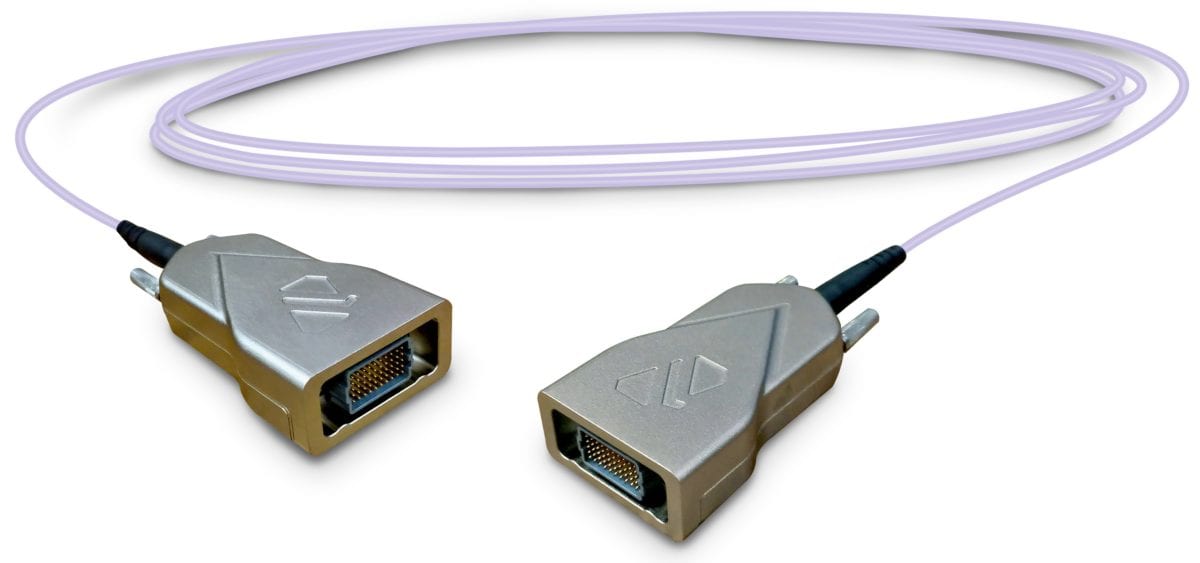
AirBorn’s SAOC with built-in optical transceiver circuit simplifies the box design process by eliminating the need to develop a space-rated transceiver to fit on the board. The SAOC handles the signal conversion for you.
Design Notes
Applications:
Commercial-grade AOCs are used in data centers and other controlled environments.
Rugged AOCs (RAOCs) and space-grade AOCs (SAOCs) are used in downhole applications, satellites, construction equipment, industrial plants, and battlefield vehicles and equipment.
Flexibility:
One device can be equipped to accept active optical cable assemblies and copper cable assemblies.
Connector options:
AOCs and RAOCs are specified by connector type.
AOCs can be used with HDMI, DisplayPort, USB, QSFP, SFP, and others.
RAOCs can be used with micro-D connectors, nano-D connectors, or micro-circular connectors, as well as hybrid arrangements, such as a micro-D connector on one end and a standard 38999 circular on the other end. Designs combining power with fiber are also possible.
Suppliers: AirBorn Inc., Amphenol Communications Solutions, JPC Connectivity, Molex, Samtec Inc., TE Connectivity, 3M (TTI Inc.)
Related Products
- RAOC
- SAOC
- Fiber optic cable assemblies
- Copper cable assemblies
Like this article? Check out our other Meet the Connector and our Wire and Cable Assemblies Market Page, and our 2023 and 2022 Article Archive.
Subscribe to our weekly e-newsletters, follow us on LinkedIn, Twitter, and Facebook, and check out our eBook archives for more applicable, expert-informed connectivity content.
- Mezzanine Connectors Product Roundup - April 16, 2024
- Out Now! New eBook Shares Bright Ideas for Electrification - April 16, 2024
- What are ARINC 801 Connectors? - April 9, 2024
